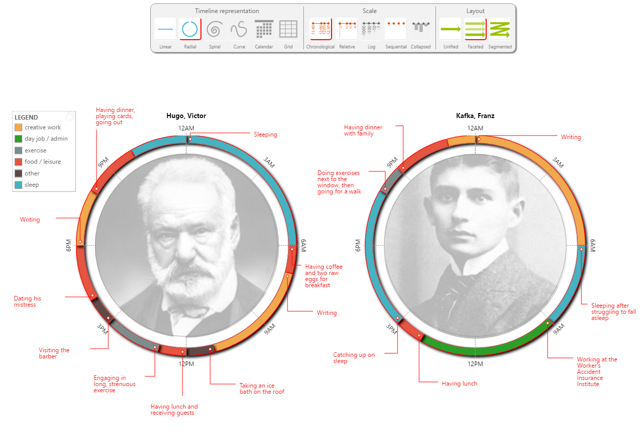Timelines have been used for centuries to visually communicate stories about sequences of events, from historical and biographical data to project plans and medical records. Depending on how a timeline is drawn, different types of insights and temporal characteristics can be emphasized, such as those relating to event order, periodicity, or synchronicity. In recent years, we have seen the emergence of interactive timeline visualization tools for both data analysis and presentation. With regards to the latter, I would argue that these presentation tools lack the expressivity to communicate a range of timeline narratives, as most of them adopt the strictly linear, chronological timeline design popularized by Joseph Priestley in the late 18th century. In this talk, I will present a design space for expressive storytelling with timelines, one grounded in a survey of hundreds of timelines published over the course of history, which includes timeline designs by Gerardus Mercator and Mark Twain, as well as exemplary timelines drawn by contemporary infographic designers. Finally, I will introduce Timeline Storyteller (timelinestoryteller.com), a timeline storytelling tool that my colleagues and I have been developing, one that realizes the expressive potential of the design space.
About the speaker: Matthew Brehmer is a postdoctoral researcher with the Human-Computer Interaction group at Microsoft Research in Redmond, Washington, where he specializes in data visualization and its use in storytelling and journalism. In early 2016 he completed a Computer Science PhD at the University of British Columbia where he was a member of Tamara Munzner’s InfoVis group. During his PhD he conducted visualization design and evaluation projects in collaboration with Microsoft Research, the Associated Press / Knight Foundation’s Overview Project, and Pulse Energy / EnerNOC. On the theoretical side, he co-developed a visualization task typology that enables communication among researchers and promotes a cross-pollination of visualization design across application domains. Prior to specializing in visualization, he completed degrees in human-computer interaction and cognitive science and worked in user experience design.

